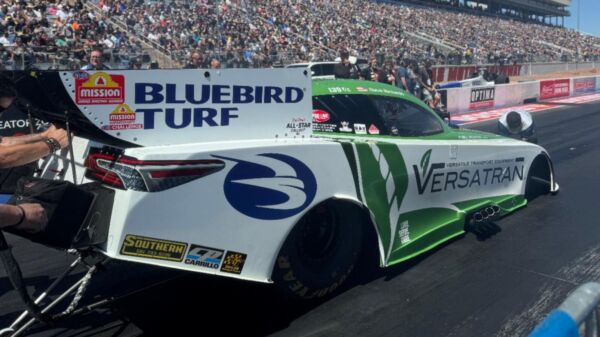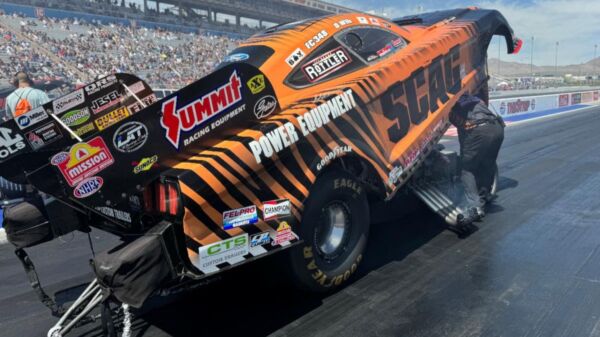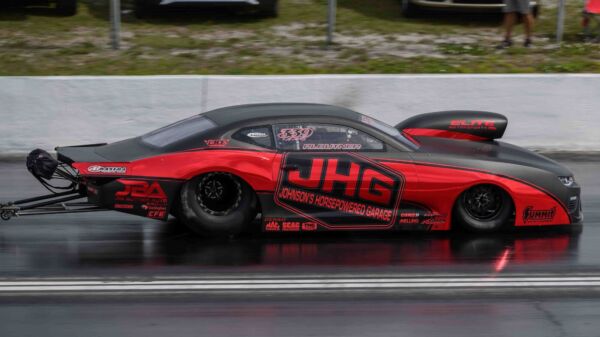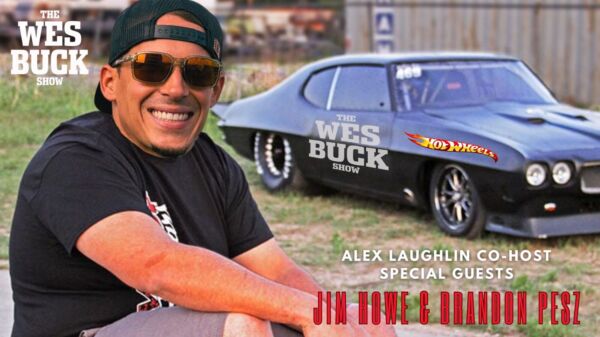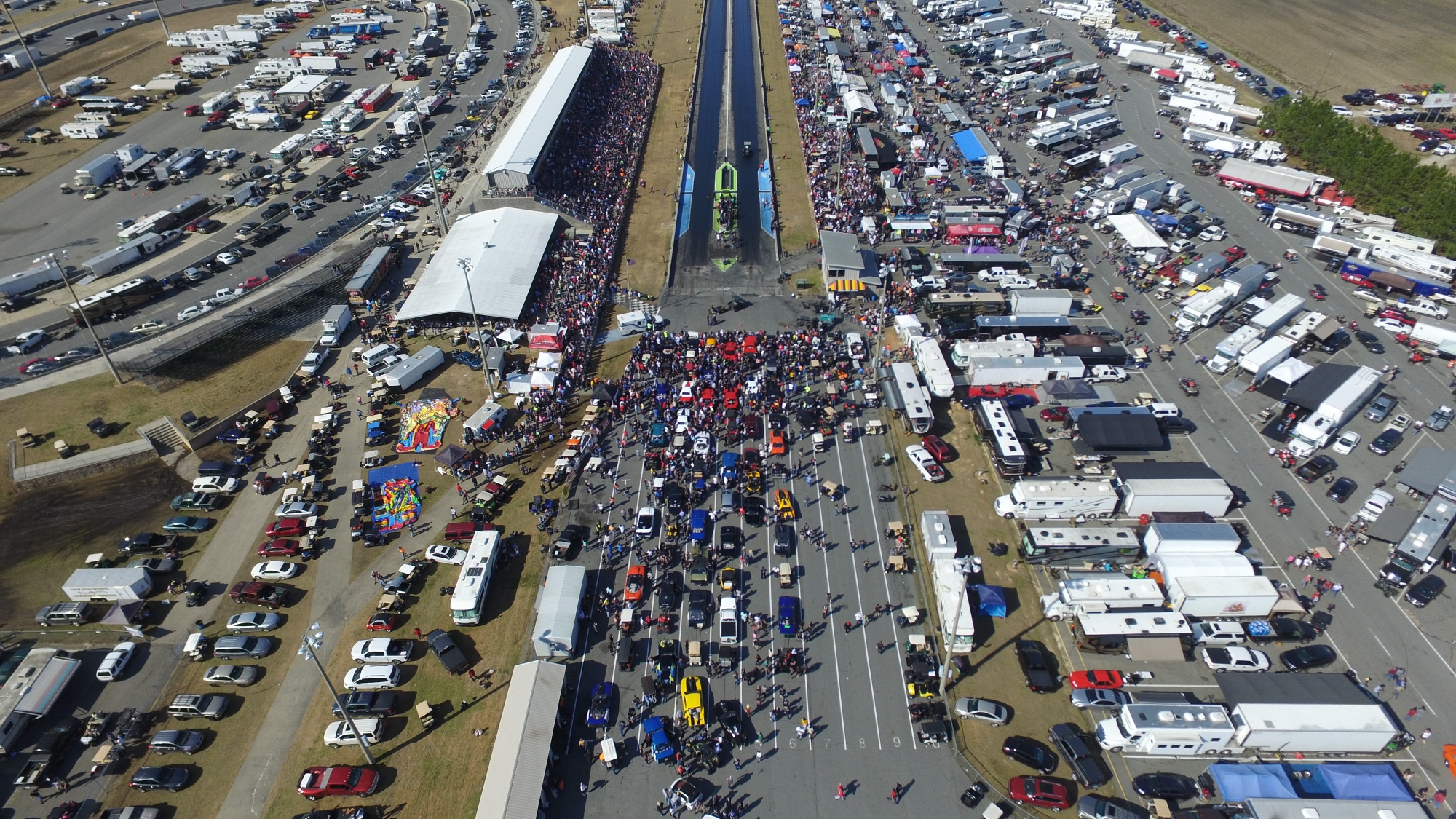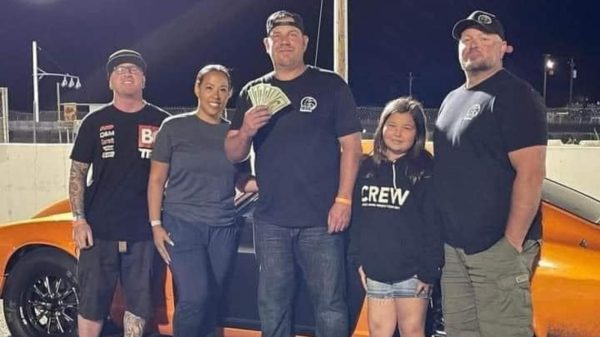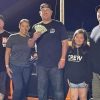In the eyes of many in the mid-2000s, drag radial racing had the potential to become a breakout segment of the sport. There were heavy-hitters involved when it came to drivers, the cars were wild and unpredictable, and it presented an exciting style of racing that could potentially draw the attention of fans.
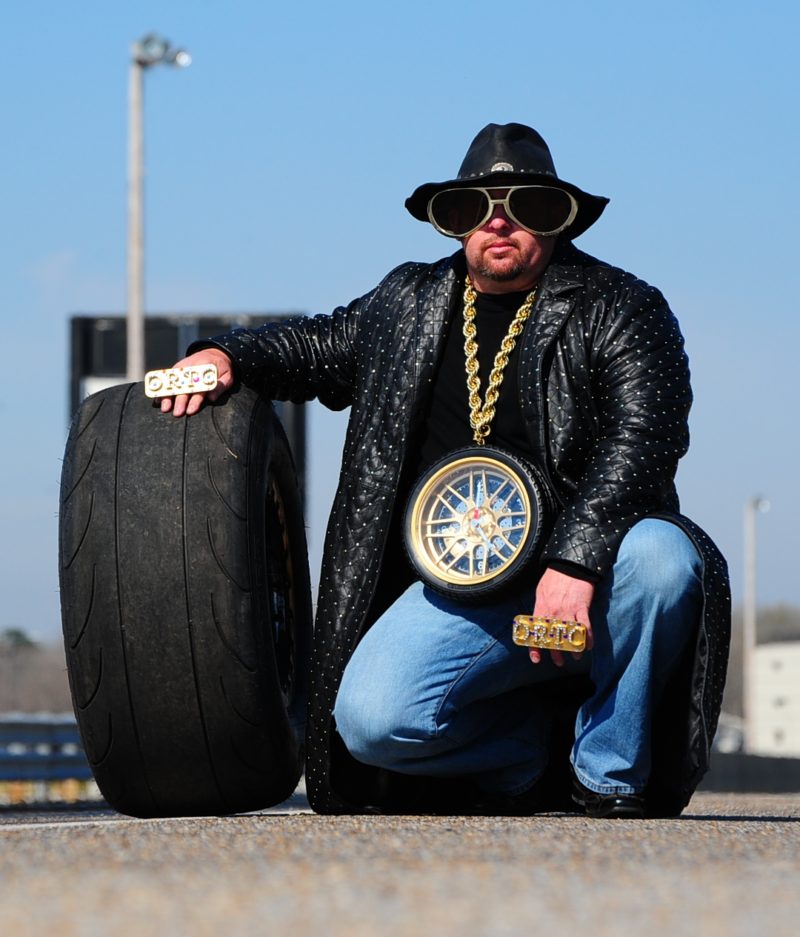
Donald Long
This story originally appeared in DI #142, the Outlaw Issue, in March of 2019.
But they weren’t showcased like a star class, relegated to grass pits at tracks and treated like afterthoughts on the race menu. By then, Donald Long had enough and his “Radial Cars to The Front” mantra – with Long’s added flavorful language, of course – was born. Drag radial had found its voice, and how it was viewed in the sport was about to change forever.
“I had never attended a drag radial race, but when I went to his first one, I thought right then and there it was on the verge of something special,” drag racing photographer John Fore III says.
For those who predicted a quick fall for “The Night the Lights Went Out in Georgia” and Long’s bombastic style, well, they have been sorely mistaken. Celebrating its 10th rendition in 2019, Lights Out is now stronger than ever. More than 70 cars entered in the race’s top class, Radial vs. the World, this February, as Alex Laughlin became the seventh different winner of the $50,000-to-win event. It has become the Super Bowl of radial racing with a style all its own, catering to a massive fanbase that is passionate about its radial racing.
This is the story of how radial racing grabbed the spotlight and how Lights Out turned into one of the biggest races in the sport thanks to a determined promoter, a colorful collection of drivers and some of the craziest on-track action drag racing had ever seen.
THE START
Mired in the background of the soon-to-be-defunct Outlaw Racing Street Car Association (ORSCA), Long knew radial racing deserved more. He held his first event at Bradenton Motorsports Park in Bradenton, Florida, in October of 2008, highlighted by a $15,000-to-win purse that Will Stevenson won. By the next year, Long found his home at South Georgia Motorsports Park and in 2010 the first Lights Out event was held. It was the official introduction of Long’s brainchild – Radial vs. the World – and David Wolfe became the first winner, knocking off Scotty Guadagno with a 4.471 after his world-record pass of 4.447 earlier in the day. Few could imagine the race could grow into its current level, but several saw something special right off the bat.
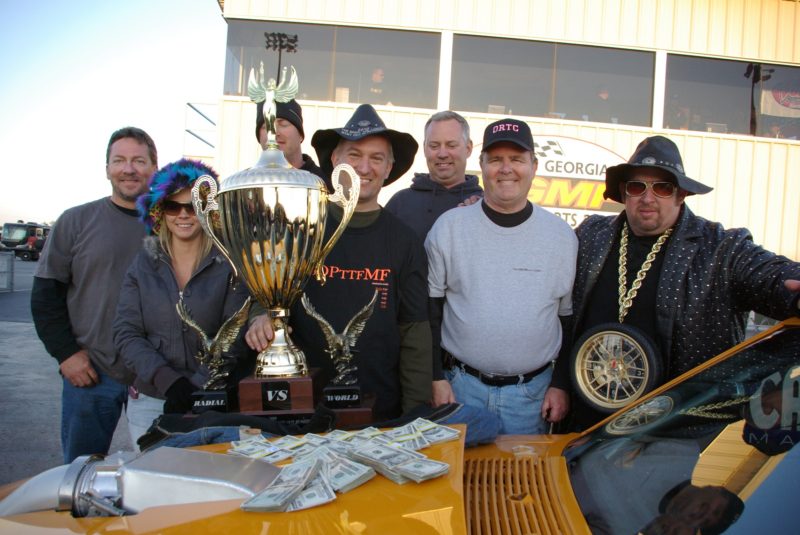

John Sears
JOHN SEARS (X275 founder): There was a pretty good core group of stock suspension and drag radial racers that we were both tapped into. He had the vision and he seized the opportunity, and knew the radial guys needed to have their own standalone event and have them be the headliner. He just had passion for small-tire racing in general and he looked at things from a different perspective. Donald saw these guys as pioneers.
DONALD LONG: Going into 2008, I felt like the radial guys were getting mistreated and getting put in the weeds, getting treated like third-class citizens. So I didn’t care if we had 20 fans that showed up (in 2008). It was about the radial guys and paying them and I wanted to make it awesome for them.
STEVIE “FAST” JACKSON (two-time Lights Out winner): That first race Donald had (in 2008), it was more cars than I had ever seen and we were way underprepared. We showed up and did not have the power or anything to run over here. I knew I had to dot my I’s and cross my T’s before I came back. But I knew from the very beginning it was going to be a big deal.
MARK WOODRUFF (longtime radial standout): We had run ORSCA Limited Street for a lot of years, so coming to this event, it was the same people we used to race with. It was all the big-name radial guys back then and it was awesome. You could see something exciting happening.
SEARS: You just had these raw, home-built hot rods and it was just a bit more chaotic getting them down the track. Some of the cars that came through tech, it was like, “We need to talk to this guy about the safety aspect of his hot rod.” That’s what got it done back in the day until everyone raised the bar.
KEITH BERRY (Lights Out VII winner): I remember when David Wolfe ran the first 4.40, won the deal and there was a big article in DRAG ILLUSTRATED on Wolfe and Duck. That really struck the iron and the curiosity for me.
LONG: That first Lights Out, I talked all this trash about Outlaw 10.5 cars and slicks, so if we go into Lights Out and a radial car gets crushed by a 10.5 car or a slick car, is it where it is today? I don’t know. Thank God for David Wolfe, though. I remember rolling around on the ground, throwing my hat up in the air I was so excited.
DAVID WOLFE (Lights Out I winner): We put that big block on the car and we were a couple tenths ahead of anybody, went rounds and won the race. All this stuff was new to everyone, but to me, it was just racing and numbers. Ultimately, I go there to race, but I thought Donald’s deal had potential and a good vibe.
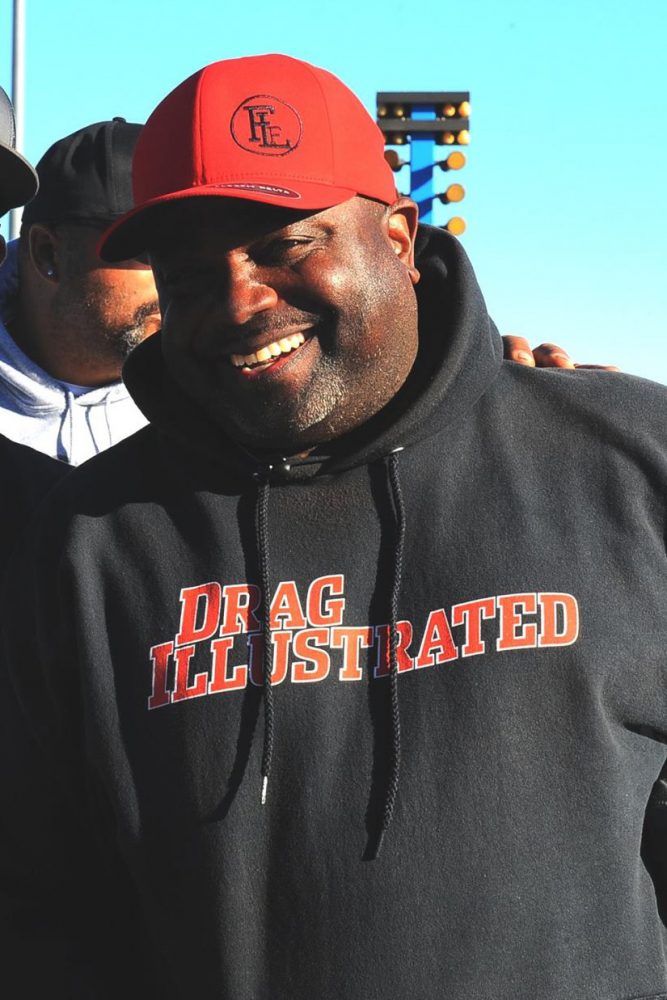
John Fore III
JOHN FORE III (Drag racing photographer): I was big into Outlaw 10.5, but ORSCA was on its way out and Donald came around at the perfect time. The first Lights Out race, the one thing that stood out was these were die-hard drag radial fans. It’s like they all knew each other or knew of one another. Plus, it was like their kickoff event of the season. From there it just grew bigger and bigger.
WOLFE: It turned into a destination race. There were a lot of top-end guys racing for very little back then. Donald put up the money and that made it nice. Some of the best guys in the whole country were here.
FORE: The racers in this class weren’t going to show up for $3,000 anymore. You had to put some money up to get the guys out there. With the quality of drivers, it’s a class that demanded some money in the pot.
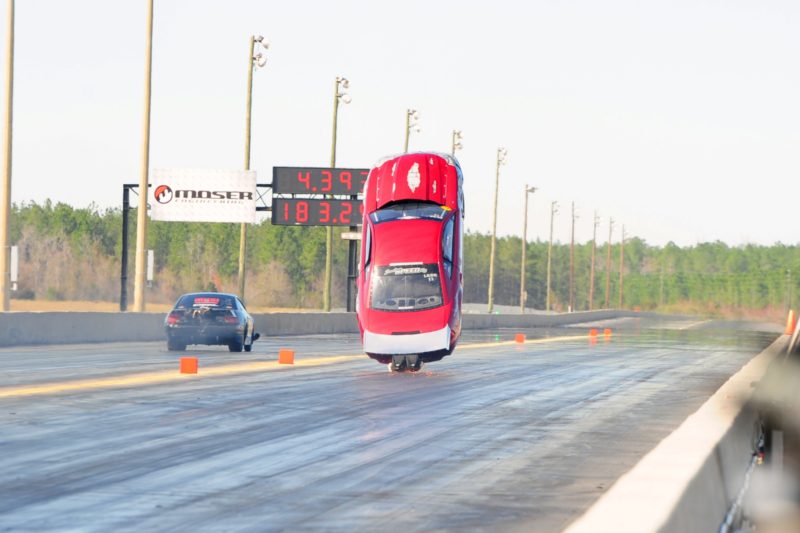
The pot had grown to $20,000-to-win in RvW, which had every driver’s attention. Eric Dillard won Lights Out II in RvW with a victory over Guadagno in the final round, an event highlighted by Dillard’s 4.40 at 187.52 to beat Paul Major. Rain won out at Lights Out III – one of two years there wasn’t a winner, with Lights Out V being the other – but by 2013 the buzz had grown considerably. When Lights Out IV arrived at SGMP, Mickey Thompson Tires had built considerable buzz with a new radial tire. Barry Mitchell made a number of 1.10 60-foot passes just weeks prior with the tire in testing and people were anxious to get it. Just how anxious people were perfectly summed up where radial racing was heading.
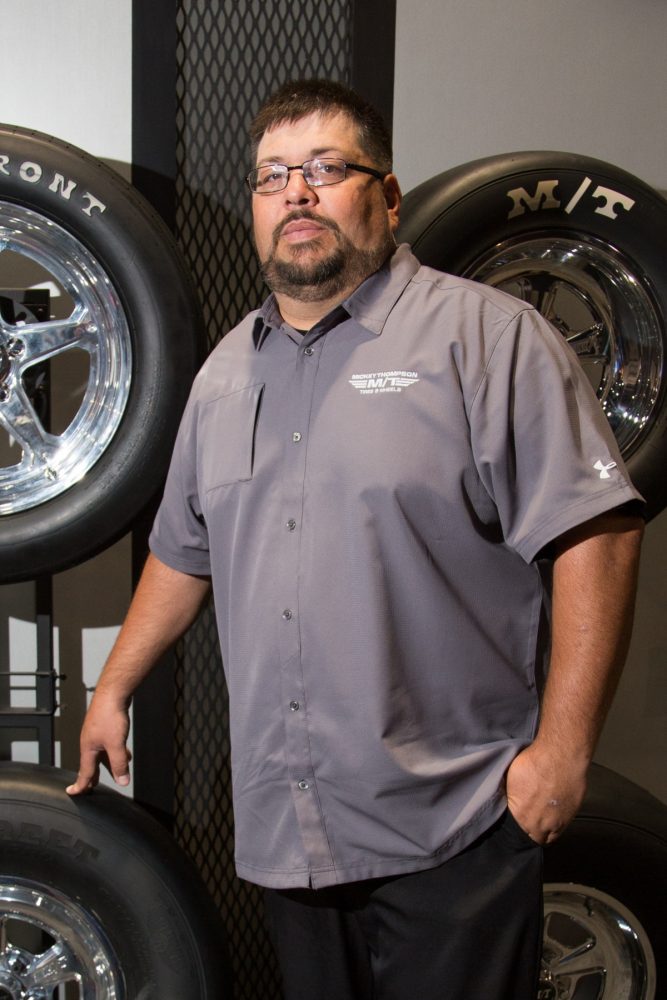
Tommy Kundrik
TOMMY KUNDRIK (Motorsports Manager, Mickey Thompson Tires): We made 100 tires and that’s all you could make in the time we had. The way I had it structured was, “Hey guys, we have a 100 of these things. Be in line at 9 a.m. on Thursday and we’ll sell them until we’re sold out.” We sold every tire. There was literally a line at the tire trailer with 100 guys in it. It was crazy. I’ve never seen everything like it. (Drag Illustrated #114)
SEARS: With the guys starting to get a handle on things, you saw each pass like, “Is this going to be a record pass? What’s going to happen next?”
LONG: We just kept moving up the chain. It’s like when you go to school and beat up one bully, and it feels pretty good so you keep rolling up on the next one.
WOODRUFF: You just never knew what would happen when you came to this race. The evolution of the class at that time was just intriguing, the level of cars showing up, everybody chasing to be No. 1. It was pretty cool. But Donald just gave back to the racers and teams. People appreciated that and that’s where you started getting dedicated followers and the best radial racers in the world.
JACKSON, who won Lights Out VI: You just never knew what you were going to see. You had these 4,000-horsepower cars, they could blow over, wheelie, catch on fire and we’re idiots for wanting to drive them. But it had everything. It was good stuff for the kids, the drivers loved all the fans that were coming and it was just all-around badass. It was like a big party.
THE ARRIVAL
The party was about to get even bigger. By the time Jackson won Lights Out VI in 2015, following Kyle Huettel’s victory at Lights Out IV with a 4.214 at 177.28 and the rained-out Lights Out V, the race was growing at a rapid rate. Fans loved the unpredictability of the action, racers willingly engaged in trash talk, displaying plenty of unique personalities and it combined into a must-see event.
But it was about to hit a fever pitch in 2016 with Lights Out VII. A handful of racers from the popular Street Outlawsshow came, bringing considerable interest with them. Long also increased the payout for the RvW winner to $50,000 for the first time. That drew plenty of attention, but the weekend took on a life of its own. By the time Saturday rolled around, interstates were shut down, gates were closed and it was pure pandemonium, all centered around a drag radial race. Keith Berry, who was a last-minute arrival, beat Jackson in a thrilling final round and, by all accounts, Lights Out had arrived on an even bigger stage.

Keith Berry
BERRY: I had raced three of Donald’s races prior to my win, but I will never forget going to Lights Out VII. I always say it: Lights Out VII was the best Lights Out you’ll ever experience. Of course, I won, so I’m biased, but I tell myself I’m not. There was something about it where it all came together.
FORE: That year I stayed at the track and it was the most amazing thing I had ever seen in my life. I remember waking up at 8:30 a.m. and the spectator side was already packed. I had never seen anything like it.
BERRY: People were going under the fences to get in, leaving their cars stranded on the side of the road – it was crazy. It was just a special, special moment to be there as a fan, much less as a racer.
LONG: We came up with the idea to have the fans do the wave up and down the stands. To be at a drag race and see a wave going, that was really neat for me.
SEARS: That particular event sort of put the Lights Out/No Mercy events on an international radar. That was the tipping point and sent this thing over the top. It really showed people what could be done.
Berry winning wasn’t even looking remotely likely. He struggled to get to the race on time, qualified 26th and then went to work on the field. In that time, people were doing everything they could to jam into SGMP before the gates were closed. The massive crowd was the biggest in Lights Out history to that point and Berry put on a show, beating Jackson on a holeshot in the final round with a run of 3.934 at 192.69 to Jackson’s 3.896. The RvW class had made incredible strides as far as performance in a short amount of time and the world was there to see it.
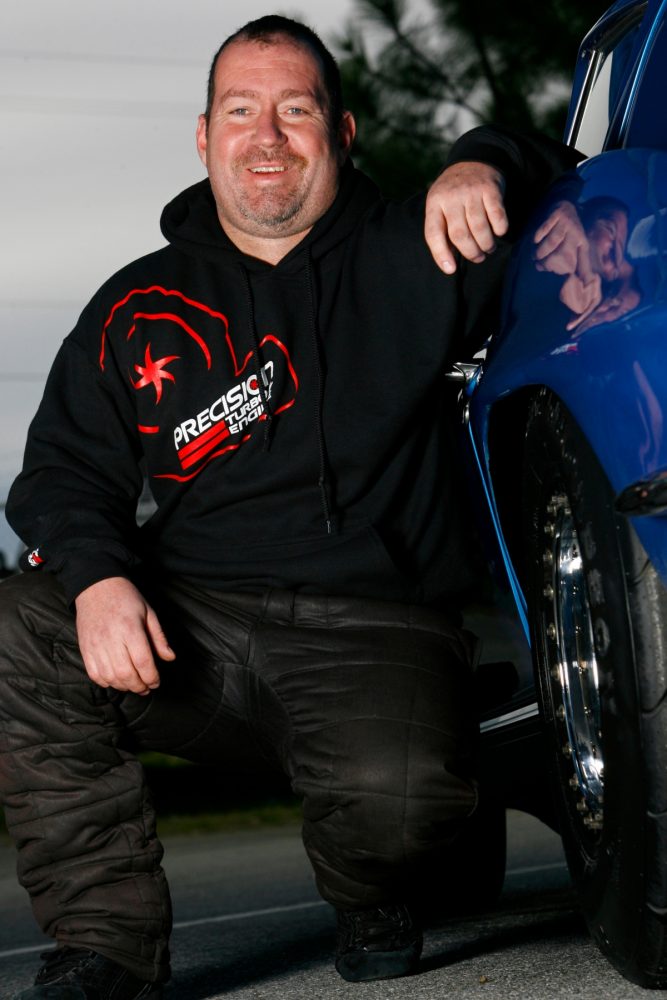
Mark Woodruff
BERRY: The reality of the race hit me Sunday morning. It was like holy cow, this is a big race. It was the first big $50,000 drag radial purse ever and people were just all about it. I think I had 8-9 Red Bulls those last two rounds. To pull it out in the fashion we did against Stevie, it was incredible.
FORE: It was the most electrifying race I have ever been to in my life. It was an event, a spectacle, whatever you want to call it.
WOODRUFF: Very seldom do you get that type of feel at an event. I didn’t get to go to Woodstock, but it probably felt something like that.
BERRY: It was the highlight of my career, the pinnacle of my racing career.
THE MAGIC
Long’s style may not be for everyone, but it’s clearly entertaining for a massive amount of fans that flock to SGMP each year and the thousands more who watch online. But the rub isn’t that Long is building himself up. Instead, he’s the biggest cheerleader for the radial driver, those who display their support to the scene with tremendous loyalty to Long and his races.
What ensues is the perfect storm of chaos, trash talk and action at a race. Seeing hundreds upon hundreds of people packed like sardines on or near the starting line is the trademark image of a Lights Out event, but it took something unique to get to that point.

JACKSON: The fans that eat, sleep and live this, they take their vacations and come here to watch this. Then you have to go beat 65-70 cars. A victory here is very cherished.
FORE: In the beginning, a lot of people didn’t like Duck because they didn’t understand what he was doing. But you have to have a personality to succeed. He knows how to get you riled up. I had never seen a promoter like that, but he appeals to the common man, the working guy.
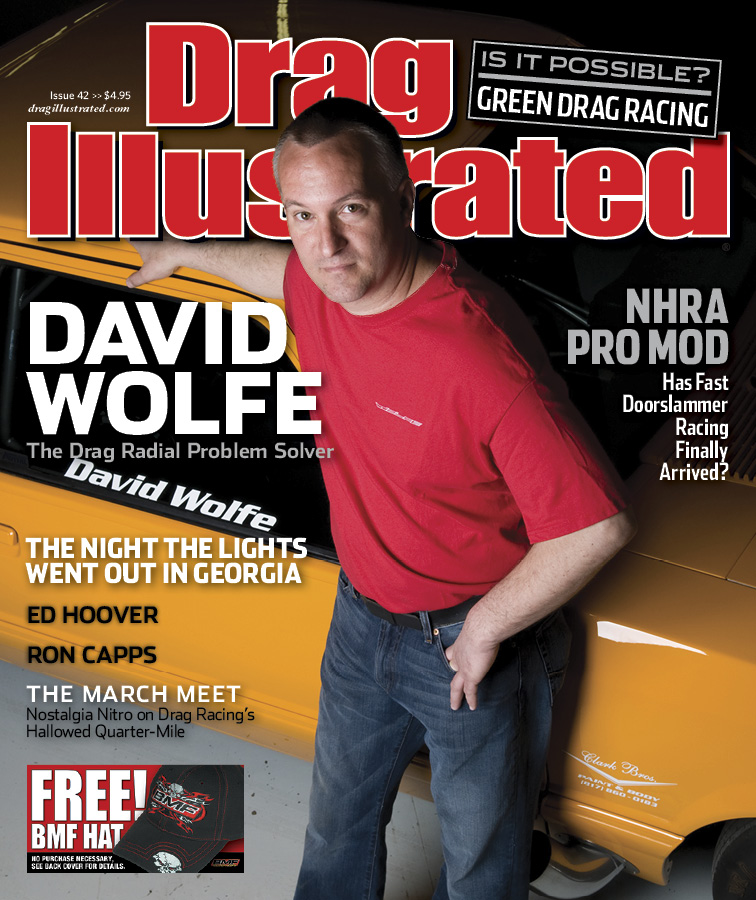 SEARS: You tie in his promotional style and people like it. In this day and age of political correctness, he went outside the lines and created his own way of promoting, building excitement and getting people interested.
SEARS: You tie in his promotional style and people like it. In this day and age of political correctness, he went outside the lines and created his own way of promoting, building excitement and getting people interested.
BERRY: Donald promotes 365 days a year and his type of promoting, he’s perfect at it. It’s brilliant.
LONG: As far as online and social media, we allow whatever. If somebody says something, we don’t tell them to tone it down. We tell them to tone it up. We don’t want someone to be afraid to say something.
WOLFE: You have your whiners that are never going to be able to do win anyway, or you have the guys who look at the rules and say, “Let’s go do this.” What happens then is you get 1-2 guys who start pushing each other, the hype gets going and before you know it you’ve got 70 Radial vs. the World cars with a 3.80-something bump spot (in 2019). That’s what it has progressed into and I love it.
THE IMPACT
Following Lights Out VII, the race has never left the limelight. “Nova Joe” Albrecht won Lights Out VIII in RvW and Jackson took the $50,000 prize a year later against Keith Haney in another magical final round.
Laughlin won on a holeshot to claim the Lights Out X victory against Daniel Pharris in 2019, as the most recent event continued to set an even higher bar when it comes to mind-blowing performances. For anyone who suggested a dip in interest in radial racing is coming, Lights Out X put those thoughts to rest as fans continued to flock to Valdosta in massive numbers. In fact, the general consensus was that Lights Out X might have just set a new standard in radial racing, opening up the possibility of what may be next.
In just a decade, the class has gone from 4.40s being incomprehensible to 3.60s on the regular with no dip in enthusiasm. The yearly trek to SGMP for Lights Out has become a destination event, and racers in radial racing are now household names in the sport.
In every way, it’s far beyond what Long ever hoped the race could be.
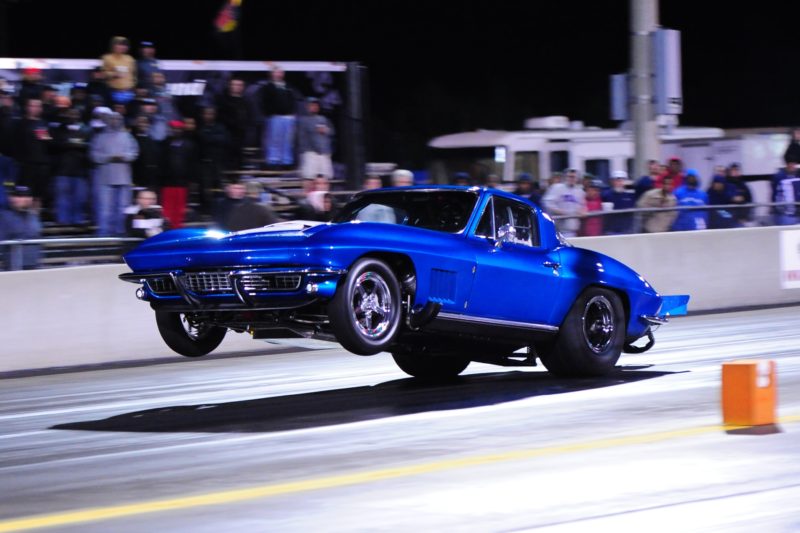
Mark Woodruff
LONG: You have the best tuners in the world that come from all over to play with these things and the drivers are incredible.

Stevie “Fast” Jackson
JACKSON: I’ve seen cars win that never should have a chance to win and I was one of them. This racing itself launched a tremendous amount of people into careers with huge, blossoming businesses now, all propelled from this event. It’s had a huge impact on our entire industry, from parts to chassis builders to manufacturers and on down the line. I don’t know a corner of the sport this hasn’t touched.
FORE: Without question, no other place has started more photographer careers than Duck’s race. I’m where I am because of Duck’s event. There’s just so much action. If you miss something major, there’s something behind it two minutes later.
WOODRUFF: It’s pretty amazing what this race has done for the racers. It’s crazy and humbling to me to walk through the pits at an NHRA race and get noticed. I never would have had this opportunity if Donald hadn’t done this.
KUNDRIK: For radial to keep going to where it’s at, it’s absolutely amazing. Just to see all these guys that were anti-radial and to see what Donald has done with this deal and see where it’s gone, it’s amazing. To have all these radial cars at the same property, it’s just amazing to see what it’s blown up to. (DI 114)
SEARS: Everything kind of goes hand-in-hand. Without great payouts, you’re not going to get a lot of racers. Without great racers, you’re not going to get a lot of fans. Without any of it, you’re not going get a lot of sponsors or manufacturers trying to one-up each other. It all has to work together and it all has to benefit. I think these events give everybody what they ask for. These events have given people the chance to have a good time, see bad, fast cars and great competition. It’s sort of an anything-can-happen type of feel.
LONG: This started off as a hobby. I was two years into it and had people telling me it was just a fad. To see it keep growing, it’s just awesome to see everything keep rolling on.
Photographs by Rick Belden, Chris Sears, John Fore III, Ian Tocher, Jason Sharp, Mike Galimi, Kevin Cox and Dyan Lover
This story was originally published on February 22, 2022. 
